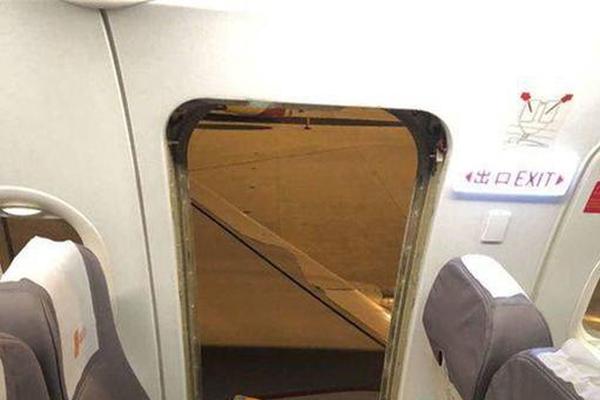
Restart the computer: Click the "Start" button, select "Shutdown" or "Logout", and then select "Restart". Enter safe mode: Press the F8 key when Windows XP starts, select "Safe Mode" and press Enter to enter the safe mode.
Click "Start" - "All Programs" - "Attachments" - "System Tools" - "System Restore" command, as shown in Figure 1. Figure 1 Click the "System Restore" command. Wait a moment. The "System Restore" dialog box will pop up in the deep xp system download. Click the "Next" button, as shown in Figure 2.
For situations where no system can be started, you need to use the boot USB disk to enter the temporary system and run the boot repair tool. Here, you can enter the relevant system through the boot disk. For the system that can be started normally, select the system directly. After entering the computer desktop, run the tool to boot and repair.
The steps to repair the XP system are as follows: set the BIOS USB disk to start, and after entering the interface in Figure 1, select the first win pe and press the Enter key.Click the boot repair software on the desktop. Then you see this blue box, enter C:, and the software will automatically fix the boot.
When restarting the computer, press and hold the "F8" key until the Windows advanced boot options menu appears. (2) Use the arrow key to highlight the "last correct configuration" (as shown in Figure 2), and then press the "Enter" key.

1. The first solution is to try security The mode starts. Press the F8 key when the computer starts up and select the safe mode to start. Safe mode can enter a minimum system environment to eliminate problems. If the system can start in safe mode, the problem may be caused by a driver or software.
2. Restart the computer - This sounds simple, but many computer problems can be solved by restarting. If your computer does not work properly, you can solve many problems by restarting.Check the power supply - Power failure may cause the computer to fail to start.
3. Use the Windows boot disk. If the boot problem is caused by the destruction of the boot record of the active partition or the file used in the operating system startup, the boot disk can solve the problem.
Run the service policy "Services.msc". Start "ClipbookServer" (folder server): This service allows other users on your network to see your folder. Of course, sometimes you can change it to manual startup, and then use other programs to publish information on your network.
When the system files related to IE are replaced or damaged, it will affect the normal use of IE. At this time, you can use the SFC command to repair it. The WIN98 system can execute SFC in operation and then perform scanning; WIN2000/XP/2003 can execute in operation. Sfc /scannow tries to fix it.
If it is a problem with the broadband itself, first connect to the broadband network cable test directly. If it is a broadband problem, contact the broadband customer service to solve it. 2) If it's a problem with the router, if it can be used, it can't be used for the time being. My own practice is to cut off the power supply of the router and plug it in. I'll see later.
Open "Control Panel" and double-click the "Network Connection" icon. In the open network connection windowIn the mouth, right-click the "Local Connection" icon to be displayed, and select the "Properties" item from the pop-up menu.
If the network card of the Windows XP system fails, you can try the following steps: check whether the network card is installed correctly: In the Windows XP system, you can find the "Device Manager" in the "Control Panel" and find the driver of the network card. Whether the program is installed normally.
If the operating system is damaged or incorrect, it may be necessary to reinstall the operating system. You can restore the system installer (such as CD-ROM, mobile hard disk, etc.) from any available drive or device on your computer. After the following interface appears, select Boot Repair to repair.
Steps to repair the XP system: restart the computer, put the XP system installation CD into the optical drive, and press any key when the screen prompts "Press any key to boot from CD". When the XP installer, welcome to the installer" message is displayed on the screen, press the "Enter" key.
Restart the computer: Click the "Start" button, select "Shutdown" or "Log Out", and then select "Restart".Enter safe mode: Press the F8 key when Windows XP starts, select "Safe Mode" and press Enter to enter the safe mode.
Advanced boot can perform system restoration (provided that there is a system backup), system image recovery (equivalent to reinstalling the system), and startup repair , it can fix the problem that hinders Windows loading.
Restart the computer: When the computer has a system corruption problem, in most cases, we can fix this problem by restarting the computer. By restarting, some programs that do not work properly can be restarted to return to normal. System recovery: Some serious system damage problems can be solved by restoring the system.
Turn on the computer, select "Start", select "Settings", and enter the settings page. After entering, select "Update and Security" to enter the next page. After entering, select "Restore" to enter the next page. After entering, select the "Start" button under "Reset This Computer".
This error is usually caused by the damage of the registry file of the Windows system. Here are several possible solutions: use Windows installation CD to repair the system. Insert the Windows installation CD into the computer, and then restart the computer.
Step: First, enter the safe mode and remove the recently installed drivers/software. 1 Boot to WinRE (Windows Recovery Environment), which can be understood as recovery mode.
The first step is to open the computer, click the "Start" button, and then click the "Settings" option. Step two, after the setting interface pops up, select the "Update and Security" option. Step three, after the new interface pops up, select the "Restore" option on the left. Click the "Start" option to restore this computer.
Real-time HS code duty updates-APP, download it now, new users will receive a novice gift pack.
Restart the computer: Click the "Start" button, select "Shutdown" or "Logout", and then select "Restart". Enter safe mode: Press the F8 key when Windows XP starts, select "Safe Mode" and press Enter to enter the safe mode.
Click "Start" - "All Programs" - "Attachments" - "System Tools" - "System Restore" command, as shown in Figure 1. Figure 1 Click the "System Restore" command. Wait a moment. The "System Restore" dialog box will pop up in the deep xp system download. Click the "Next" button, as shown in Figure 2.
For situations where no system can be started, you need to use the boot USB disk to enter the temporary system and run the boot repair tool. Here, you can enter the relevant system through the boot disk. For the system that can be started normally, select the system directly. After entering the computer desktop, run the tool to boot and repair.
The steps to repair the XP system are as follows: set the BIOS USB disk to start, and after entering the interface in Figure 1, select the first win pe and press the Enter key.Click the boot repair software on the desktop. Then you see this blue box, enter C:, and the software will automatically fix the boot.
When restarting the computer, press and hold the "F8" key until the Windows advanced boot options menu appears. (2) Use the arrow key to highlight the "last correct configuration" (as shown in Figure 2), and then press the "Enter" key.

1. The first solution is to try security The mode starts. Press the F8 key when the computer starts up and select the safe mode to start. Safe mode can enter a minimum system environment to eliminate problems. If the system can start in safe mode, the problem may be caused by a driver or software.
2. Restart the computer - This sounds simple, but many computer problems can be solved by restarting. If your computer does not work properly, you can solve many problems by restarting.Check the power supply - Power failure may cause the computer to fail to start.
3. Use the Windows boot disk. If the boot problem is caused by the destruction of the boot record of the active partition or the file used in the operating system startup, the boot disk can solve the problem.
Run the service policy "Services.msc". Start "ClipbookServer" (folder server): This service allows other users on your network to see your folder. Of course, sometimes you can change it to manual startup, and then use other programs to publish information on your network.
When the system files related to IE are replaced or damaged, it will affect the normal use of IE. At this time, you can use the SFC command to repair it. The WIN98 system can execute SFC in operation and then perform scanning; WIN2000/XP/2003 can execute in operation. Sfc /scannow tries to fix it.
If it is a problem with the broadband itself, first connect to the broadband network cable test directly. If it is a broadband problem, contact the broadband customer service to solve it. 2) If it's a problem with the router, if it can be used, it can't be used for the time being. My own practice is to cut off the power supply of the router and plug it in. I'll see later.
Open "Control Panel" and double-click the "Network Connection" icon. In the open network connection windowIn the mouth, right-click the "Local Connection" icon to be displayed, and select the "Properties" item from the pop-up menu.
If the network card of the Windows XP system fails, you can try the following steps: check whether the network card is installed correctly: In the Windows XP system, you can find the "Device Manager" in the "Control Panel" and find the driver of the network card. Whether the program is installed normally.
If the operating system is damaged or incorrect, it may be necessary to reinstall the operating system. You can restore the system installer (such as CD-ROM, mobile hard disk, etc.) from any available drive or device on your computer. After the following interface appears, select Boot Repair to repair.
Steps to repair the XP system: restart the computer, put the XP system installation CD into the optical drive, and press any key when the screen prompts "Press any key to boot from CD". When the XP installer, welcome to the installer" message is displayed on the screen, press the "Enter" key.
Restart the computer: Click the "Start" button, select "Shutdown" or "Log Out", and then select "Restart".Enter safe mode: Press the F8 key when Windows XP starts, select "Safe Mode" and press Enter to enter the safe mode.
Advanced boot can perform system restoration (provided that there is a system backup), system image recovery (equivalent to reinstalling the system), and startup repair , it can fix the problem that hinders Windows loading.
Restart the computer: When the computer has a system corruption problem, in most cases, we can fix this problem by restarting the computer. By restarting, some programs that do not work properly can be restarted to return to normal. System recovery: Some serious system damage problems can be solved by restoring the system.
Turn on the computer, select "Start", select "Settings", and enter the settings page. After entering, select "Update and Security" to enter the next page. After entering, select "Restore" to enter the next page. After entering, select the "Start" button under "Reset This Computer".
This error is usually caused by the damage of the registry file of the Windows system. Here are several possible solutions: use Windows installation CD to repair the system. Insert the Windows installation CD into the computer, and then restart the computer.
Step: First, enter the safe mode and remove the recently installed drivers/software. 1 Boot to WinRE (Windows Recovery Environment), which can be understood as recovery mode.
The first step is to open the computer, click the "Start" button, and then click the "Settings" option. Step two, after the setting interface pops up, select the "Update and Security" option. Step three, after the new interface pops up, select the "Restore" option on the left. Click the "Start" option to restore this computer.
Trade data for strategic sourcing
author: 2024-12-23 23:18How to use trade data for market expansion
author: 2024-12-23 22:43Real-time HS code tariff updates for ASEAN
author: 2024-12-23 21:14Global sourcing directories by HS code
author: 2024-12-23 21:10Global trade KPI dashboard templates
author: 2024-12-23 22:53Tire imports HS code classification
author: 2024-12-23 22:41Petroleum products HS code insights
author: 2024-12-23 22:14European Union trade analytics
author: 2024-12-23 21:07 HS code-focused compliance audits
HS code-focused compliance audits
259.99MB
Check Export subsidies linked to HS codes
Export subsidies linked to HS codes
758.62MB
Check Mineral ores HS code tariff details
Mineral ores HS code tariff details
646.47MB
Check GCC HS code-based tariff systems
GCC HS code-based tariff systems
495.19MB
Check Global sourcing directories by HS code
Global sourcing directories by HS code
815.69MB
Check HS code strategy for African trade lanes
HS code strategy for African trade lanes
645.58MB
Check HS code-driven market entry strategy
HS code-driven market entry strategy
784.36MB
Check Industry-specific tariff code reference
Industry-specific tariff code reference
882.81MB
Check Advanced trade route cost analysis
Advanced trade route cost analysis
738.85MB
Check How to comply with global trade regulations
How to comply with global trade regulations
826.47MB
Check global trade intelligence
global trade intelligence
962.57MB
Check How to structure long-term contracts
How to structure long-term contracts
888.39MB
Check Pharmaceutical raw materials HS code checks
Pharmaceutical raw materials HS code checks
994.34MB
Check HS code-driven product bundling strategies
HS code-driven product bundling strategies
363.75MB
Check Import export cost optimization
Import export cost optimization
384.37MB
Check Trade data for energy sector
Trade data for energy sector
472.72MB
Check Dairy powder HS code references
Dairy powder HS code references
865.85MB
Check Maritime logistics HS code mapping
Maritime logistics HS code mapping
384.89MB
Check Top-rated trade data platforms
Top-rated trade data platforms
911.31MB
Check How to standardize trade documentation
How to standardize trade documentation
364.57MB
Check Metal commodities HS code directory
Metal commodities HS code directory
173.35MB
Check Comparative trade performance metrics
Comparative trade performance metrics
163.26MB
Check How to use data for HS code classification
How to use data for HS code classification
784.44MB
Check How to scale export operations with data
How to scale export operations with data
839.92MB
Check HS code adaptation for local regulations
HS code adaptation for local regulations
125.43MB
Check Global trade content syndication
Global trade content syndication
467.76MB
Check international suppliers data
international suppliers data
426.28MB
Check Global trade intelligence newsletter
Global trade intelligence newsletter
189.75MB
Check Industrial chemicals HS code monitoring
Industrial chemicals HS code monitoring
172.67MB
Check How to identify monopolistic suppliers
How to identify monopolistic suppliers
383.38MB
Check Real-time trade data feeds
Real-time trade data feeds
484.49MB
Check Granular HS code detail for compliance officers
Granular HS code detail for compliance officers
364.58MB
Check Marine exports HS code insights
Marine exports HS code insights
535.55MB
Check Pharma R&D materials HS code verification
Pharma R&D materials HS code verification
364.32MB
Check Global trade data-driven asset utilization
Global trade data-driven asset utilization
199.52MB
Check HS code accuracy for automotive exports
HS code accuracy for automotive exports
219.16MB
Check
Scan to install
Real-time HS code duty updates to discover more
Netizen comments More
2140 HS code-driven portfolio diversification
2024-12-23 22:50 recommend
2033 HS code alignment with labeling standards
2024-12-23 22:24 recommend
717 Trade data for strategic pricing
2024-12-23 22:18 recommend
2227 HS code-based insurance evaluations
2024-12-23 21:37 recommend
1925 Export subsidies linked to HS codes
2024-12-23 21:30 recommend